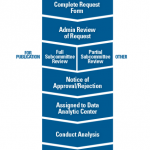The CORRONA coordinator responsible for managing our small staff came to me in early 2004 with the news that insufficient funds were available to meet payroll the following week. I had been an academic doctor, although I had already transitioned to a hybrid private practice in which I continued to serve as the AMC fellowship director with rheumatology fellows, rotating residents and medical students in my clinic. My own personal financial resources were not flush after spending 20 years in academic medicine.
These moments of truth were coming in waves. Should I use my own limited resources to build a bridge to a time when other support might become available? Was this wise? Would I ever see a return on this potentially reckless, personal investment?
My wife, Sara, bravely agreed with the decision to tap into our own limited resources. She had been a witness to the passion and frustration that consumed this effort from the start.
Looking Up
Temporal trends with the introduction of new biologic agents supported the idea of a registry model for assessing the performance of expensive drugs with possible toxicities. Other pharmaceutical companies recognized that monitoring real-world performance of their drugs made sense. And of course, if long-term safety and effectiveness data were published on a competitor drug, then they would like to see publications on their drugs as well. Contracts were signed that were, at last, not directly dependent on enrollment numbers. We had a little more breathing room.
The infrastructure now included quality control, information technology (IT) and biostatistical support. We produced peer-reviewed publications. Site payments had to be improved! Changes in questionnaires, now needed on an annual basis as new drugs and toxicities were identified, could be daunting to sites.
The dedicated and superb CORRONA staff lead at this time, Kim Hinkle (now Kim Gottfried), BA, MS, knew the circumstances of each site and knew how to hold the hands of the physicians and research coordinators at our sites. Which clinical site coordinator was on maternity leave? Who was challenged with an especially cranky office manager? Who needed a special call? It was critical that site research personnel become true partners with CORRONA. They were rewarded with gift cards. But what always moved the collaborative needle was always the frequent and caring attention we paid to the dedicated research coordinators at CORRONA research sites. We initiated in-person and virtual meetings for them and paid them to attend. These people supplied us with practical guidance and advice on what might work and what wouldn’t.


